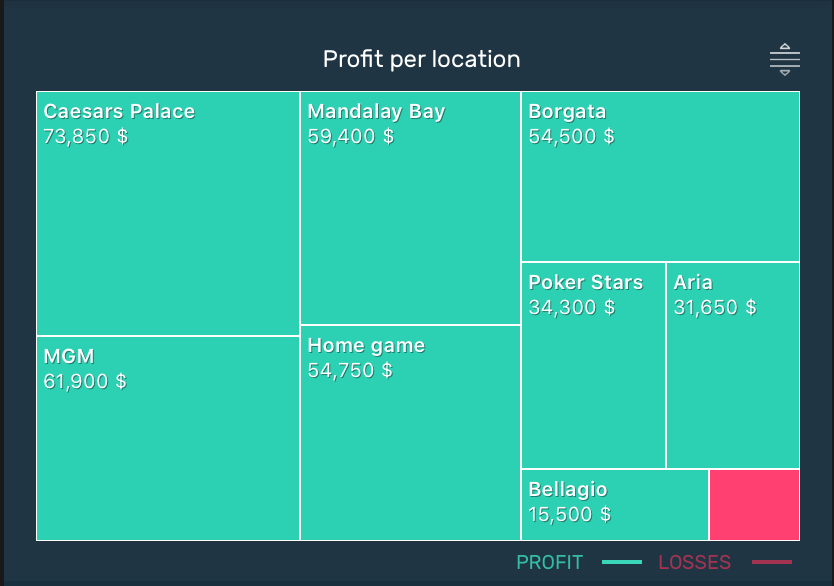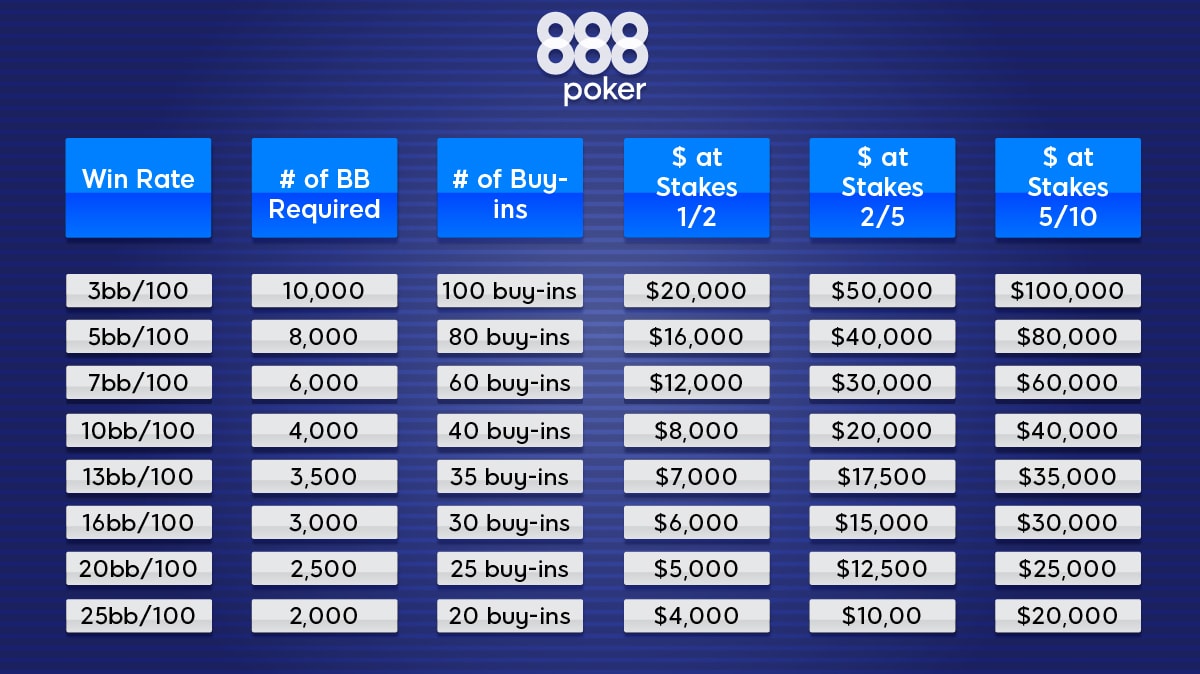Poker Bankroll Management (BRM) – what is it? Your bankroll is the amount of money which you have decided to allocate to playing poker, and bankroll management allows you to decide how you use it. It is a very important skill, but a lot of players ignore it. When you set aside an amount that you have decided to play poker with it will be easier. Bankroll management When poker players talk of their “bankroll”, it means a sum of money they have set aside exclusively for poker. It is very important that this money, whether it grows or shrinks through playing, is kept separate from all your other funds and financial dealings.
By Alton Hardin
Defining a Bankroll
Your bankroll is essentially the amount of money you have set aside to play poker.

What is Bankroll Management

Therefore, bankroll management (BRM) is the methods in which a poker player manages his or her bankroll. However, it is more than just that. Bankroll management is a combination of using our bankroll size to determine what stakes we can afford to play at while minimizing our risk of going bust.
Poker Bankroll Management App
Importance of Bankroll Management

All poker players face what is called variance, essentially the up and down swings within poker where we either sometime win a lot or at other times lose a lot. We all go on heater sessions where we cannot lose and at other times we run ice cold and can’t seem to win a hand.
Proper bankroll management allows us to withstand variance downswings and prevent us from going bust. Without proper bankroll management and having the appropriate bankroll size, we risk the possibility of losing our entire bankroll.
Bankroll Size
There is no single set rule on bankrolls and different players with different goals will require different-sized bankrolls. However, for online poker players it is widely recommended that you have anywhere from 20 to 40 buy-ins (BIs) at your current stake.
No Limit Holdem Bankroll Size Recommendations
Poker Bankroll Management Calculator
| Buy-In | Number of Buy-Ins | Bankroll Requirement |
| $2NL | 20 to 40 | $40 to $80 |
| $5NL | 20 to 40 | $100 to $200 |
| $10NL | 20 to 40 | $200 to $400 |
| $25NL | 20 to 40 | $500 to $1,000 |
Taking Shots
Many players wonder when you should take shots at the next level. There are basic rules:
- Once you reach 20BIs at the next level, take a shot and move up.
- If you go on a variance downswing and drop below your initial 20BI bankroll, move down a level.
For example, if you start with a $100 5NL bankroll and build that up to $200, you are ready to take a shot at 10NL with 20BIs. However, if after you take a shot and at any point in time you drop below $200 (20BIs), then you should drop back down to 5NL until you build your bankroll back up to $200.
Basic Tenets of Bankroll Management

Never Play Outside Your Financial Means
You should never play outside your financial means, period. Variance downswings are a fact in poker and you do not want to put yourself in a spot that will bust your entire bankroll or cause you financial harm away from the poker table.
Focus on Your Goals
Let your own personal goals dictate your bankroll management needs. If you are recreational player that plays for fun and has other sources of income, then a smaller bankroll is okay. However, if you are a professional poker player that relies on your bankroll, you should strictly adhere to proper bankroll management rules to minimize your risk of going bust.
Play Stakes your Bankroll can Withstand
Remember that variance downswings are a fact within poker. It is not a matter of if you will go on a major downswing, rather it is when and how big of a downswing. Therefore, you should never play higher stakes than you bankroll can permit you to withstand variance.

Thoughts on Online Bankrolls
While it is tempting to leave your bankroll online on the sites that you play, it is highly recommended to not do so. After the Full Tilt scandal, poker players should not trust or rely on poker sites to handle a majority of their bankroll, especially if that person is a professional poker player. The last thing you want is to have a majority of your net worth stored on a poker site.
Instead, keep your bankroll in your bank account, not only where it is protected, but also where you can earn interest on it and let your money work for you. Only keep a minimal bankroll online and reload when necessary. Doing so will allow you to minimize your risk exposure to a poker site going offline and taking your money with it.